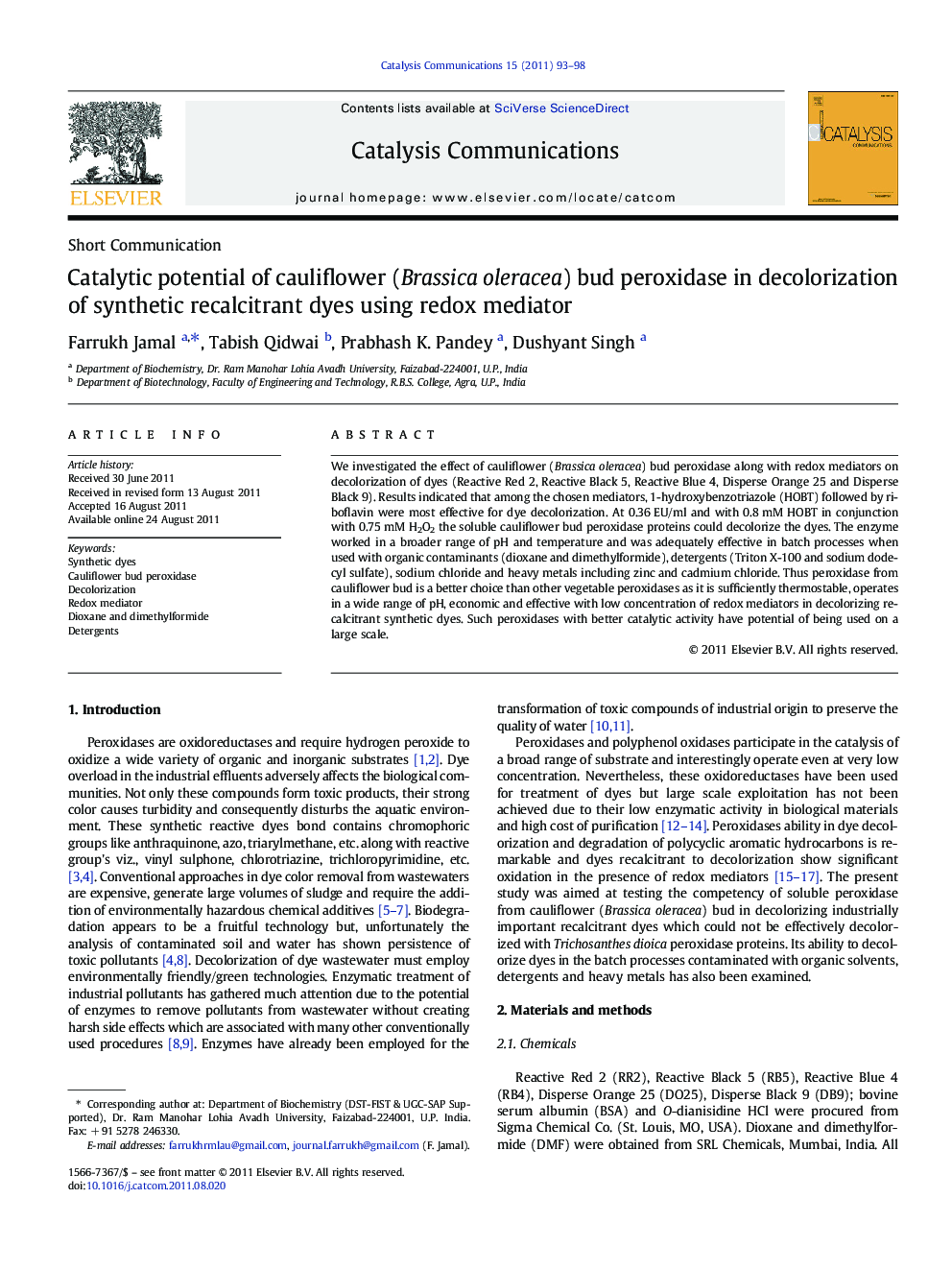| کد مقاله | کد نشریه | سال انتشار | مقاله انگلیسی | نسخه تمام متن |
|---|---|---|---|---|
| 50757 | 46812 | 2011 | 6 صفحه PDF | دانلود رایگان |

We investigated the effect of cauliflower (Brassica oleracea) bud peroxidase along with redox mediators on decolorization of dyes (Reactive Red 2, Reactive Black 5, Reactive Blue 4, Disperse Orange 25 and Disperse Black 9). Results indicated that among the chosen mediators, 1-hydroxybenzotriazole (HOBT) followed by riboflavin were most effective for dye decolorization. At 0.36 EU/ml and with 0.8 mM HOBT in conjunction with 0.75 mM H2O2 the soluble cauliflower bud peroxidase proteins could decolorize the dyes. The enzyme worked in a broader range of pH and temperature and was adequately effective in batch processes when used with organic contaminants (dioxane and dimethylformide), detergents (Triton X-100 and sodium dodecyl sulfate), sodium chloride and heavy metals including zinc and cadmium chloride. Thus peroxidase from cauliflower bud is a better choice than other vegetable peroxidases as it is sufficiently thermostable, operates in a wide range of pH, economic and effective with low concentration of redox mediators in decolorizing recalcitrant synthetic dyes. Such peroxidases with better catalytic activity have potential of being used on a large scale.
Figure optionsDownload as PowerPoint slideHighlights
► Cauliflower bud peroxidase tested for dye color removal in batch process.
► Optimum activity with 0.8 mM HOBT/0.36 EU SCBP/ml/0.75 mM H2O2/pH (3–7).
► Performance examined in presence of Triton X-100/SDS/NaCl/ZnCl2/CdCl2.
► Turns out to be potent and more effective than other tested vegetable peroxidases.
Journal: Catalysis Communications - Volume 15, Issue 1, 15 November 2011, Pages 93–98